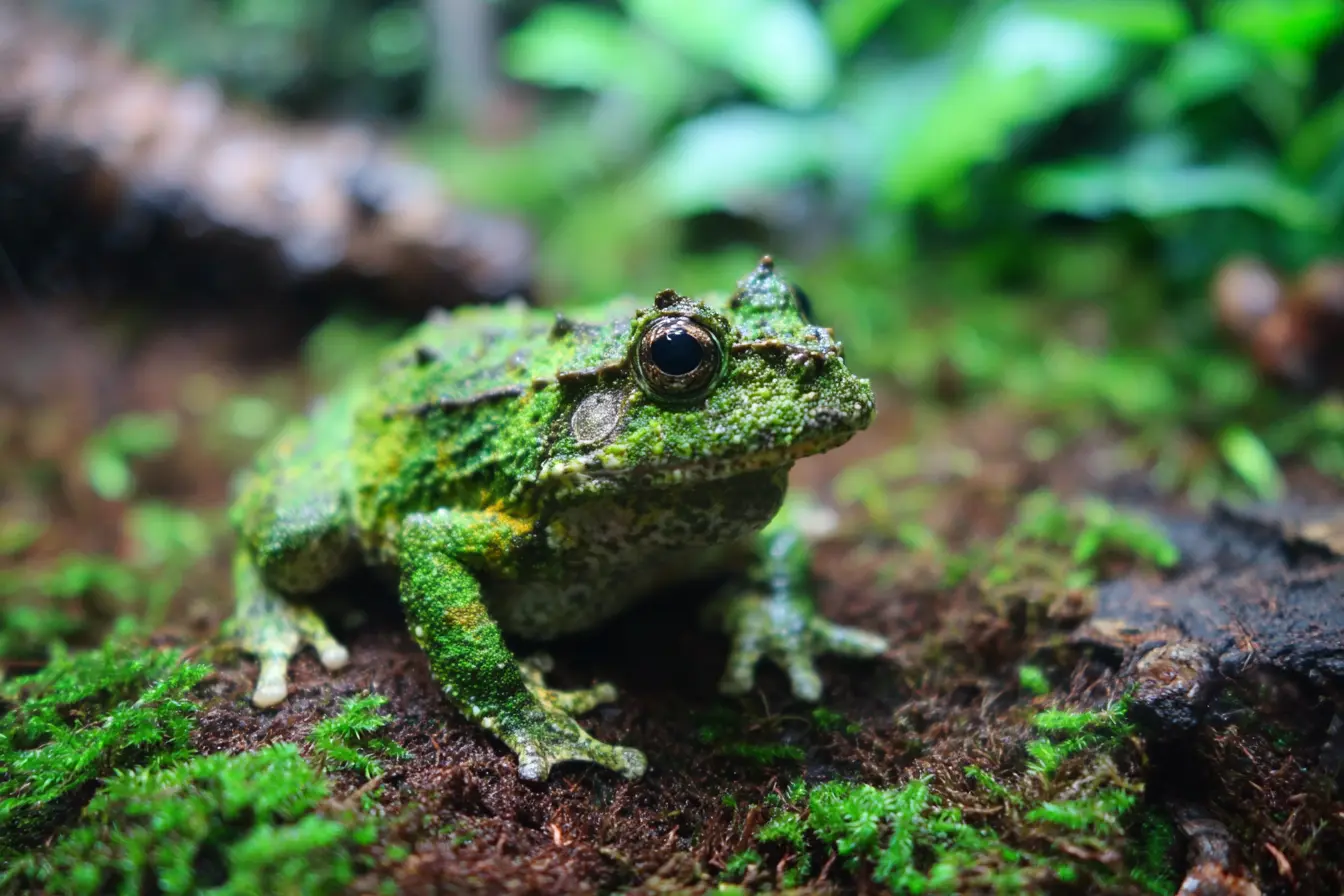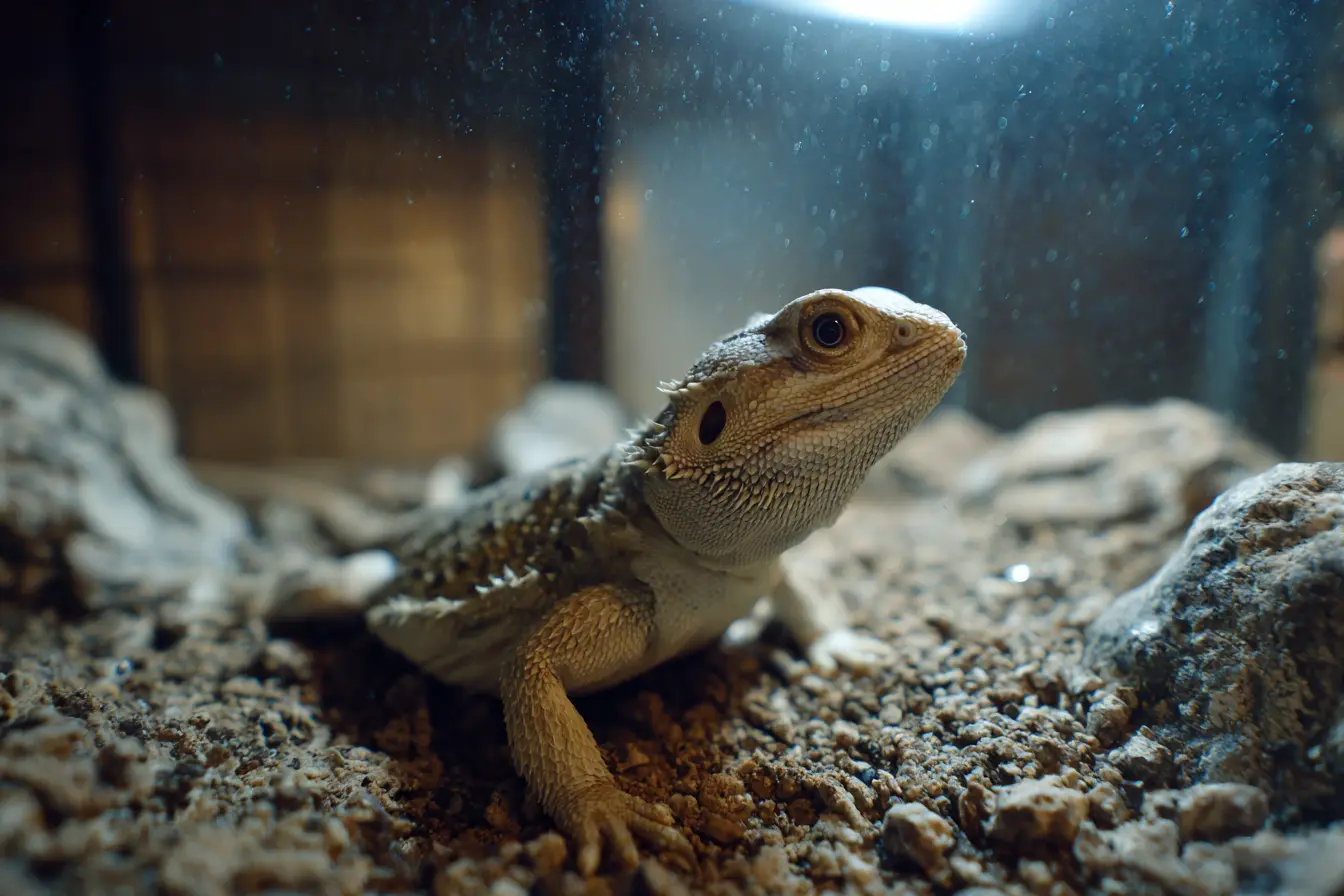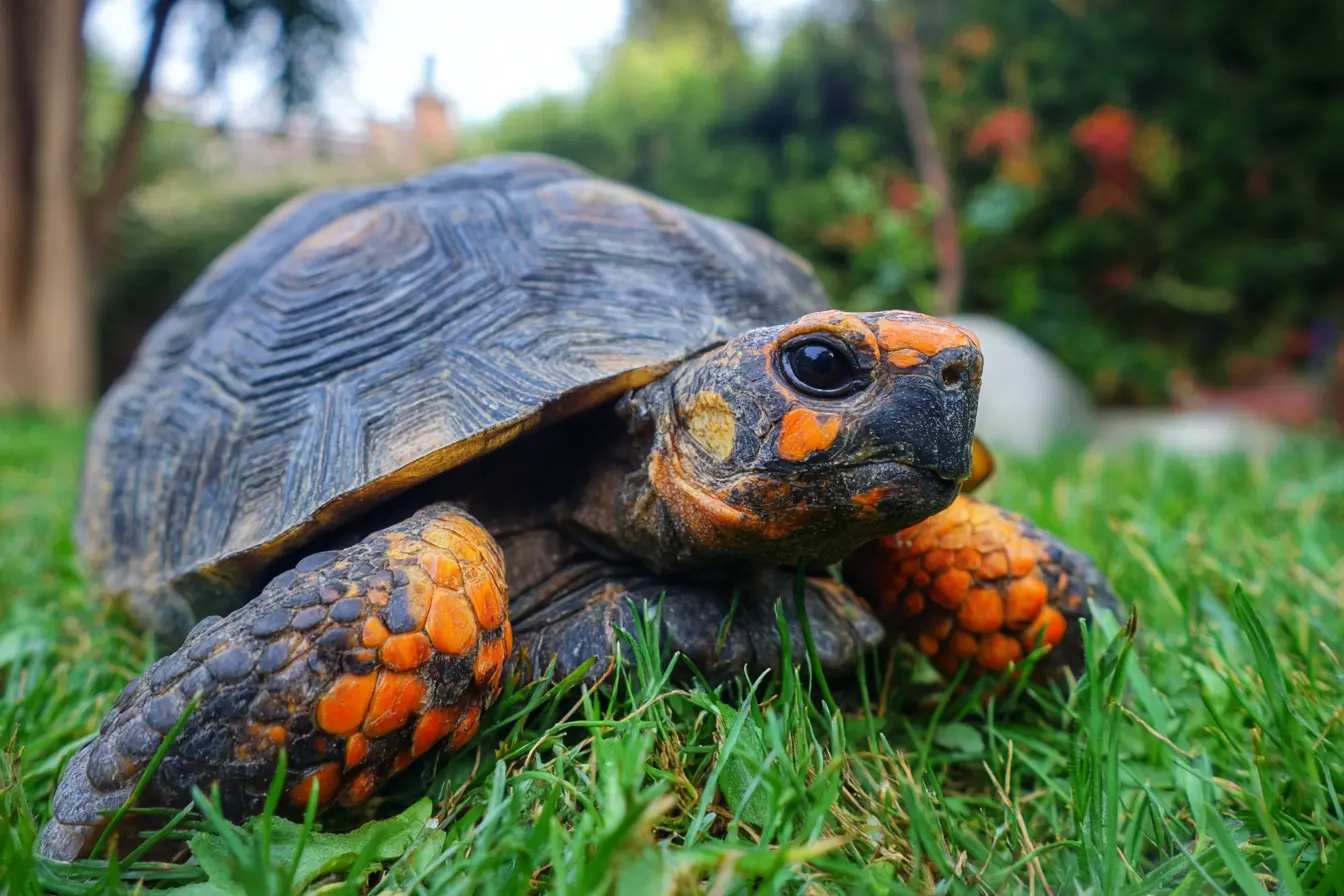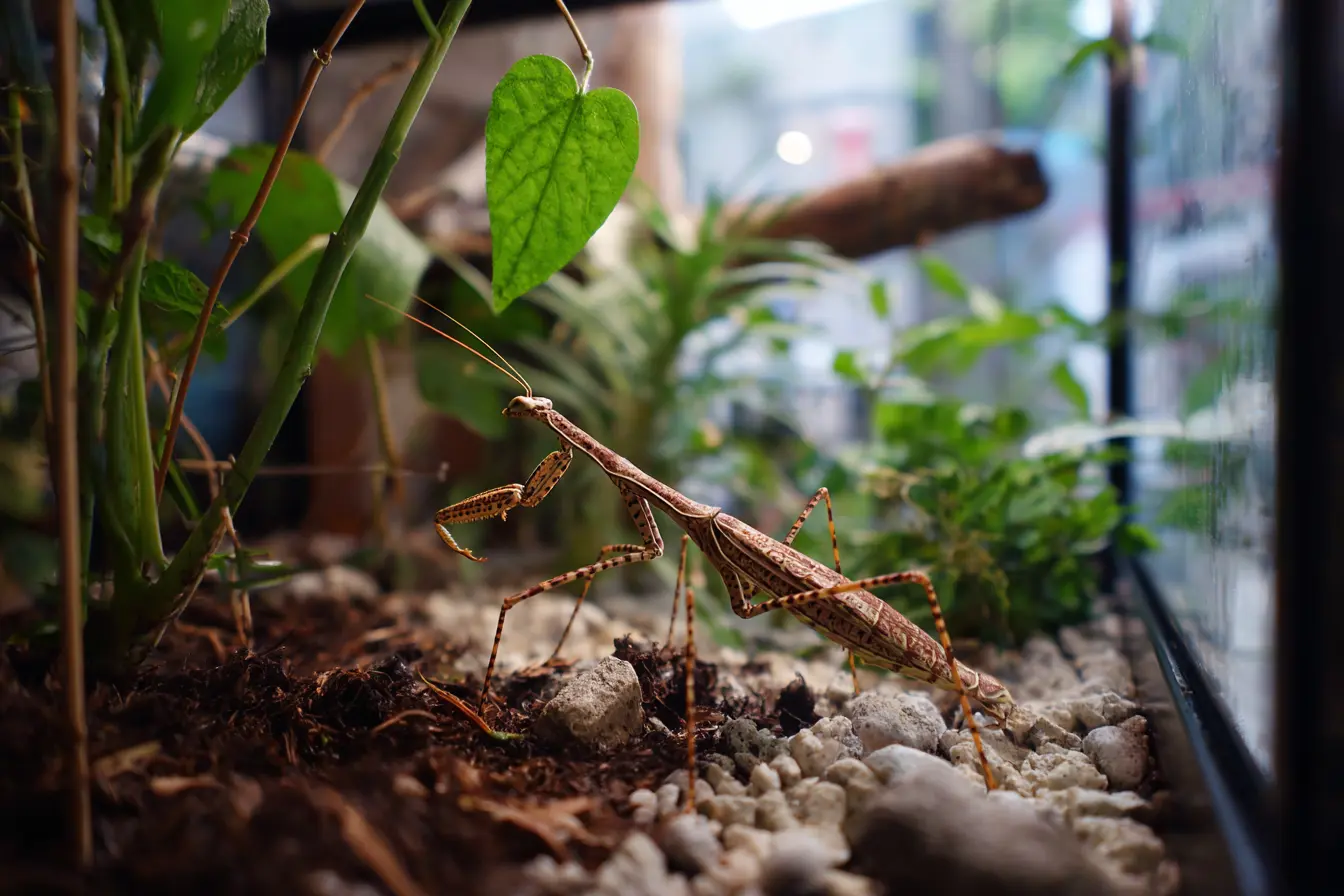
The Complete Guide to Caring for a Vietnamese Mossy Frog
If you're looking for an amphibian that combines a fascinating appearance with relatively simple care needs, the Vietnamese mossy frog (Theloderma corticale) might be the perfect choice. With its camouflage skin and quiet, secretive behaviour, this species is a favourite among amphibian enthusiasts and bioactive keepers alike.
This guide covers everything you need to know to create a healthy, enriching environment for your mossy frog.
Introduction to the Vietnamese Mossy Frog
The Vietnamese mossy frog is native to the northern regions of Vietnam, where it inhabits humid, rocky forest streams, caves, and flooded crevices. Its appearance is unlike any other frog — a bumpy green and black skin that looks like moss-covered stone, perfect for hiding in the wild.
These frogs are mostly nocturnal, semi-aquatic, and very shy. In captivity, they can live up to 10–15 years with good care.
Is a Vietnamese Mossy Frog the Right Pet for You?
Before choosing this species, consider the following:
- They require a cool, humid, and semi-aquatic setup
- They are not handleable pets — observation only
- They are nocturnal and may be hidden during the day
- They are ideal for naturalistic or bioactive enclosures
- They are generally hardy once established
If you enjoy setting up complex habitats and watching natural behaviours, mossy frogs can be a captivating addition.
Housing Your Vietnamese Mossy Frog
Enclosure Size and Setup
A group of two to four mossy frogs can be housed in a 60 x 45 x 45 cm (24 x 18 x 18 inch) terrarium. These frogs thrive in enclosures that mimic their natural environment.
Key features to include:
- Water area covering one-third to one-half of the floor space
- Land area with cork bark, moss, or rock ledges
- Plenty of hides, overhangs, and plant cover
- Vertical climbing surfaces and perches
- Secure lid — they can climb glass
They are excellent candidates for a bioactive setup.
Substrate and Water
Use a moisture-retaining substrate like:
- Coconut fibre
- Sphagnum moss
- Leaf litter over a drainage layer
- Smooth stones or driftwood
For the water section:
- Use dechlorinated or RO water
- Water depth should be 5–10 cm with a gentle slope or exit ramp
- Install a small, low-flow filter or perform partial water changes regularly
Lighting and Temperature
Mossy frogs prefer cool, dim conditions similar to their natural cave habitats.
- Day temperature: 18–22°C (65–72°F)
- Night temperature: 16–20°C (60–68°F)
- Avoid temperatures above 24°C (75°F)
- Use low-level LED lighting for a natural day-night cycle
- UVB is not strictly necessary, but a low-output UVB bulb (2.0–5.0) can benefit plant growth and health
No additional heating is usually required unless your home is particularly cold.
Humidity and Ventilation
High humidity is essential, but good ventilation is also important to prevent mould.
- Maintain humidity around 80–90%
- Mist 1–2 times daily using dechlorinated or RO water
- Use a hygrometer to monitor humidity levels
- Cover part of the enclosure top to retain moisture if needed
Feeding Your Vietnamese Mossy Frog
These frogs are insectivores and prefer live prey. They hunt by ambush, often staying motionless for long periods.
Suitable food items:
- Crickets (appropriately sized)
- Black soldier fly larvae
- Dubia roaches
- Earthworms (cut into smaller pieces)
- Waxworms (occasional treat)
- Isopods (in bioactive setups)
Dust food with calcium powder twice a week and a multivitamin once a week. Feed adults every 2–3 days; juveniles more frequently.
Behaviour and Temperament
Vietnamese mossy frogs are shy, nocturnal, and sedentary. During the day, they hide in crevices, under moss, or in water. At night, they become more active and may climb or explore their enclosure.
They rarely vocalise, but males may produce low croaks during mating season.
These frogs are best observed in a quiet, dimly lit room. Avoid handling unless absolutely necessary.
Health and Common Issues
With proper husbandry, mossy frogs are hardy and disease-resistant. However, common issues include:
- Skin infections due to low humidity or poor water quality
- Respiratory issues from poor ventilation or incorrect temperatures
- Nutritional deficiencies from an unbalanced diet
- Stress from overhandling or loud environments
Signs of illness include:
- Loss of appetite
- Lethargy or unresponsiveness
- Skin discolouration or lesions
- Excessive floating or difficulty climbing
Seek advice from a qualified exotics vet if you notice any of these symptoms.
Breeding Vietnamese Mossy Frogs
Breeding is possible but requires careful environmental control:
- Cool temperatures and increased misting simulate rainy season
- Males call from hiding spots
- Eggs are laid above water on vertical surfaces
- Tadpoles drop into water and require clean, shallow pools to develop
- Feed tadpoles on algae, powdered spirulina, or commercial tadpole diets
Breeding should only be attempted by experienced keepers prepared to raise tadpoles.
Where to Get a Vietnamese Mossy Frog
Always source mossy frogs from a reputable breeder or exotic amphibian specialist. Avoid wild-caught individuals, which are often stressed, carry parasites, and may not adapt well to captivity.
Look for frogs that are:
- Active and alert at night
- Free of visible injuries or deformities
- Well-fed but not bloated
- Housed in clean, naturalistic conditions
Be prepared to pay a premium for captive-bred frogs, as they are less commonly available than other species.
Final Thoughts
The Vietnamese mossy frog is a unique and rewarding amphibian for the dedicated keeper. With their incredible camouflage, quiet nature, and low-maintenance care needs, they make an excellent display species in naturalistic or bioactive enclosures.
While they may not be interactive pets, the joy of observing their natural behaviours in a lush, self-sustaining habitat is well worth the effort.
Contents
- Introduction to the Vietnamese Mossy Frog
- Is a Vietnamese Mossy Frog the Right Pet for You?
- Housing Your Vietnamese Mossy Frog
- Lighting and Temperature
- Humidity and Ventilation
- Feeding Your Vietnamese Mossy Frog
- Behaviour and Temperament
- Health and Common Issues
- Breeding Vietnamese Mossy Frogs
- Where to Get a Vietnamese Mossy Frog
- Final Thoughts
Tags
Vets near you
Speciality vets
- Aquatics vet specialists
- Birds vet specialists
- Camelids vet specialists
- Cats vet specialists
- Cattle vet specialists
- Deer vet specialists
- Dogs vet specialists
- Equines vet specialists
- Exotic vet specialists
- Goats vet specialists
- Pigs vet specialists
- Poultry vet specialists
- Sheep vet specialists
- Small Mammals vet specialists
- Wild vet specialists



